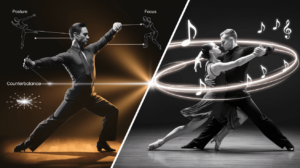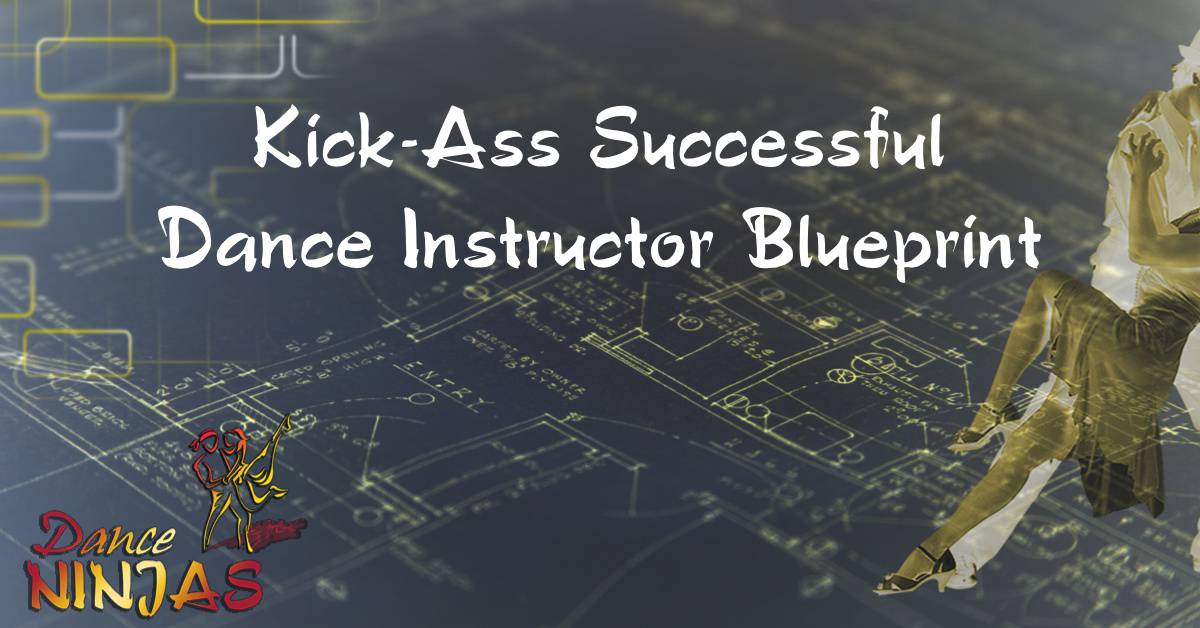The subtle but extremely vital difference between teaching someone to do a style of dance vs teaching someone to partner dance.
Teaching someone they need to dance with any one technique (for example, counterbalance, elasticity, pulse, etc…) at any moment in a dance (or for the whole dance) is teaching them to dance a style of dance.
Teaching them to use a technique based on how & when their partner uses that technique is teaching them to partner dance.
Of course, you can combine these and teach someone to use a technique based on how their partner uses it, while also showing them how it is done if they want to create a certain look/feel/style/movement/etc… but if your goal is also to teach them to partner dance, be careful of how you word it because you might end up encouraging a lack of partner dance skills.
This is a big difference for me on how well someone teaches Fusion, in my definition of Fusion.
Fusion = fusing your movement with your partner’s movement and music.
Therefore, a fusion teacher would definitely focus on their students using a technique based on how & when their partner uses that technique (or for musical purposes). They would make this a higher priority over learning to do that technique at a specific moment because of styling or because that is just what you do in this dance form/movement.
For example, if you are teaching students that a specific dance (or movement) requires counterbalance, then you are teaching them a style that will inhibit them to do that dance (or movement) with someone who does it without counterbalance.
If you are teaching that same dance (or movement) and teaching them how to do it with someone who uses counterbalance or doesn’t use counterbalance, then you are teaching them to partner dance.
This will also make a big difference on how well you teach your students to be able to dance with everyone, regardless of their skill level, or their dance background.
Styling and moves can still be taught, but if they are taught (either purposefully or accidentally) in a way that inhibits the ability to connect to any partner or any music, then it doesn’t fit the definition of Fusion described above & also doesn’t help them dance with everyone to any music.
Here are 3 ways you could teach Counterbalance in a dance form:
1. Teaching a Style of Dance: If you are teaching a specific dance (or movement) that requires counterbalance, then you are teaching a style that could inhibit your students to do that dance (or movement) with someone who does it without counterbalance (unless you are teaching option 3 below).
2. Teaching Partner Dance: If you are teaching that same dance (or movement) and teaching how to do it with someone who uses counterbalance, or doesn’t use counterbalance, or uses varying degress of counterbalance, then you are teaching partner dance within the concept of counterbalance.
3. Teaching Partner Dance within a Specific Style: If you are teaching that same dance (or movement) and teaching how to do it with counterbalance, while recognizing that it can be done without counterbalance (but you are currently focusing on learning it with counterbalance), then you are teaching partner dance while focusing on a specific style of dance/movement.
#3 is a great way to teach, however, it is extremely easy to think you are doing #3, when you are actually encouraging #1.
Disclaimer… There is nothing wrong with #1. #1 is great for performing and it can be a lot of fun too! That said, if you are teaching people to partner dance, #1 can encourage people to actually decline in their partner dance skills very easily and without even realizing it.
Let me explain….
====== EXCESS INFO=======
If you want to add some styling ideas in, then you can say, “If you want to dance like ‘fill in name of dancer here’, then you would do it with this amount of counterbalance… but be careful, if your partner doesn’t know how to do it with counterbalance, it might feel better to do it without counterbalance.”
Thoughts? Questions?


